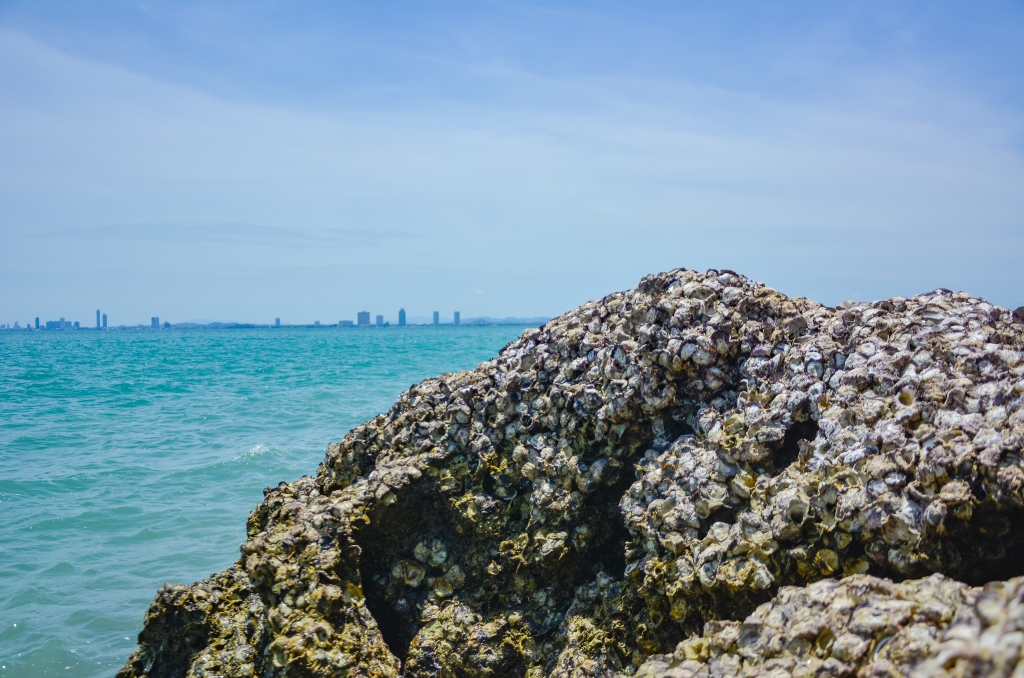Oyster reefs at sea – Courtesy: Shutterstock – Image by golfza.357
With temperatures rising throughout the world, freezes and cold weather extremes in the Sunshine State are diminishing–a clear sign that Florida’s climate is slowly shifting from subtropical to tropical. Tropicalization has had a cascading effect on Florida’s ecosystems. Along the Gulf Coast and Tampa Bay, researchers from the University of South Florida found evidence of homogenization of estuarine ecosystems.
Lead author Stephen Hesterberg, a recent graduate of USF’s integrative biology doctoral program, noticed mangroves were taking over most oyster reefs while conducting fieldwork in Tampa Bay. This is a significant change that threatens species that are dependent on oyster reef habitats. This includes the American oystercatcher, a species of bird that the Florida Fish and Wildlife Conservation Commission has already labeled as “threatened.”
Alongside distinguished university professor of integrative biology, Susan Bell, and doctoral student Kendal Jackson, Hesterberg explored how several mangrove islands were once oyster reefs and the cause of the habitat conversation.
The interdisciplinary USF team found that the plunge in the number of freezes allowed mangrove islands to replace the originally dominant salt marsh vegetation. In Tampa Bay, shallow coastal waters and remnant shorelines supported typical subtropical marine habitats for centuries. These include seagrass beds, salt marshes, mud flats, and oyster reefs. When mangroves replaced the salt marsh vegetation along the shoreline, they abruptly took over the oyster reef habitats that stood there for hundreds of years.
“Rapid global change is now a constant, but the extent to which ecosystems will change and what exactly the future will look like in a warmer world is still unclear,” Hesterberg said. “Our research gives a glimpse of what our subtropical estuaries might look like as they become increasingly ‘tropical’ with climate change.”
The study, which was published in the Proceedings of the National Academy of Sciences, depicts how climate-driven changes in one ecosystem can cause issues in another.
Using aerial images taken from 1938 to 2020, the team found that 83 percent of tracked oyster reefs throughout Tampa Bay fully converted to mangrove islands. In addition, the rate of conversion accelerated throughout the 20th century. After 1986, Tampa Bay experienced a large decrease in the number of freezes–a factor that would kill mangroves naturally.
“As we change our climate, we see evidence of tropicalization–areas that once had temperate types of organisms and environments are becoming more tropical in nature,” Bell said. She added that this study provides an individual opportunity to study changes in adjacent coastal ecosystems and develop predictions regarding future oyster reef conversions.
While the switch to mangrove islands is well-advanced in the Tampa Bay estuary and estuaries down south, Bell said Florida ecosystem managers in northern coastal areas will eventually face tropicalization within decades.
“The outcome from this study poses an interesting predicament for coastal managers, as both oyster reefs and mangrove habitats are considered important foundation species in estuaries,” Bell said.
Oyster reefs provide coastal protection by reducing the harsh impact of waves and simultaneously improve water quality. Although mangroves do provide some benefits, such as carbon sequestration and habitats for birds, other ecosystem functions specific to oyster reefs will suffer as reeds transition to mangrove islands. The loss of oyster reef habitats directly threatens reef-dependent species and wild oyster fisheries.
In the long run, tropicalization will make it extremely difficult to maintain oyster reefs, however, human intervention through active removal of mangrove seedlings or reef restoration could slow down or prevent the homogenization of subtropical landscapes. This allows both mangrove tidal wetlands and oyster reefs to coexist.
In his new role as executive director of the Gulf Shellfish Institute, a non-profit scientific research organization, Hesterberg has plans to continue studying the implications of such habitat transition on shellfisheries. He is furthering his research to examine how to design oyster reef restoration that will lengthen ecosystem lifespan or avoid mangrove transitioning altogether.
Are you interested in Florida’s nature? For stories like this and much more: Florida Insider is dedicated to educating, entertaining and informing its readers about everything Florida. Easy to read content at the palm of your hands and covering the stories that matter.

